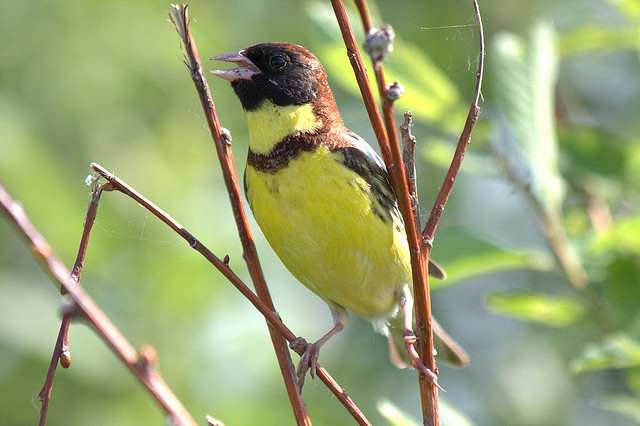Linnuvaatleja news, www.linnuvaatleja.ee
Translation Liis
Estonian text posted 30.10.2017
The passenger pigeon (Ectopistes migratorius) that lived in
Although extinction of the passenger pigeon seemed impossible, the extermination of the species took place within only a few decades through mindless hunting and the destruction of their habitats – forests . The last passenger pigeon kept caged died in 1914.
What happened to the passenger pigeons shows that even very numerous and widely spread species should be observed when the first signs of danger appear.
In the second half of the previous century the yellow-breasted bunting (Emberiza aureola) was still a very numerous species whose breeding territory reached from
The first signs that the numbers of the species had declined came in the 1990s from

Yellow-breasted bunting / Photo: Madina Arystanova (wikimedia commons)
The main causes of the decline in the numbers of yellow-breasted buntings can be compared to those of the passenger pigeon. The yellow-breasted bunting too migrates in large groups and gathers to spend the night in enormous flocks that are very easy to hunt. While earlier the yellow-breasted bunting was caught for food in a relatively small area in Southern China, this has changed by now to a mass enterprise in a very large area which in turn has brought along a decrease in the number of other bunting species living in
Although catching the yellow-breasted bunting is prohibited in
Currently the yellow-breasted bunting is on the red list of the International Union for Conservation of Nature in the critically endangered species category.
The international protection program for the yellow-breasted bunting should be ready in 2019. This year
In
More to read:
BirdLife International 17.10.2017 Is the Yellow-breasted Bunting the next Passenger Pigeon?
Info about the yellow-breasted bunting on BirdLife International home page.
Margus Ots
info/at/linnuvaatleja.ee


